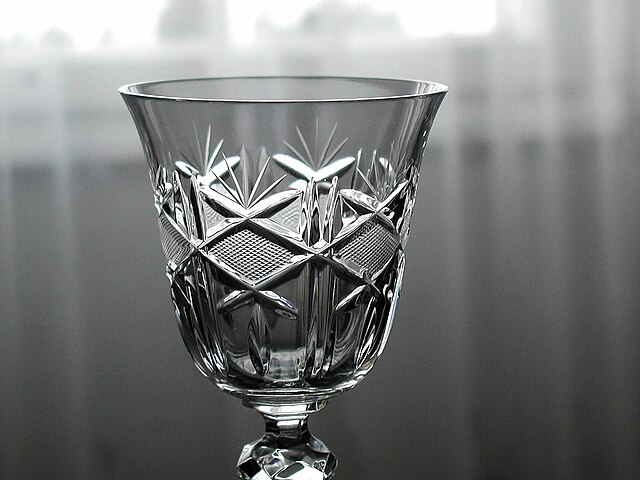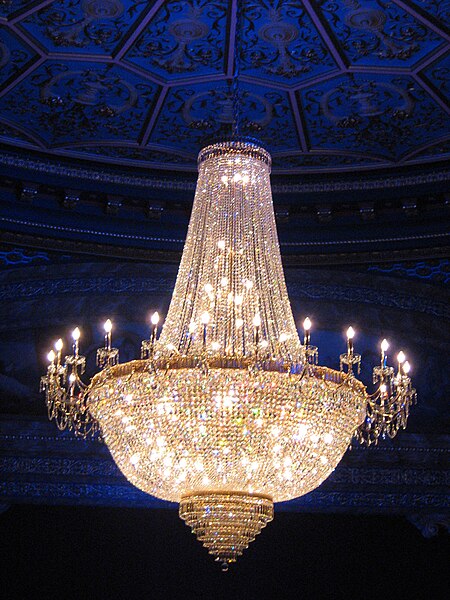Cut glass or cut-glass is a technique and a style of decorating glass. For some time the style has often been produced by other techniques such as the use of moulding, but the original technique of cutting glass on an abrasive wheel is still used in luxury products. On glassware vessels, the style typically consists of furrowed faces at angles to each other in complicated patterns, while for lighting fixtures, the style consists of flat or curved facets on small hanging pieces, often all over. Historically, cut glass was shaped using "coldwork" techniques of grinding or drilling, applied as a secondary stage to a piece of glass made by conventional processes such as glassblowing.
Bowl of a wine glass in typical cut glass style
Cut glass chandelier in Edinburgh
Chandelier in the chapel of Emmanuel College, Cambridge, donated in 1732, one of the earliest datable cut glass examples. The shape follows contemporary brass examples, with glass branches but no "drops"; only the pieces down the stem are cut, mostly with flat facets.
Pair of Regency chandeliers in Saltram House, England
Lead glass, commonly called crystal, is a variety of glass in which lead replaces the calcium content of a typical potash glass. Lead glass contains typically 18–40% lead(II) oxide (PbO), while modern lead crystal, historically also known as flint glass due to the original silica source, contains a minimum of 24% PbO. Lead glass is often desirable for a variety of uses due to its clarity. In marketing terms it is often called crystal glass.
Cut glass wine glass made of lead glass
Fluoroscopy room with control space separated by lead shielding glass
Lead crystal beads






